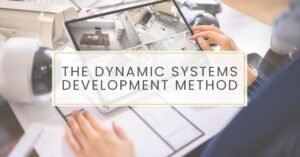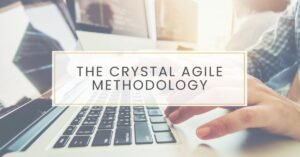Once upon a time, in a land far, far away, there lived a little girl named Sophie. Sophie loved playing with her toys, but one day, she wished that they could talk to her and tell her what they needed.
One day, her wish came true.
She woke up to find that all of her toys had come to life! Her teddy bear, her doll, and even her bicycle could all talk to her.
They told her that they were part of something called the Internet of Things, or IoT for short.
Sophie was confused. She had never heard of the IoT before.
So, her toys explained it to her. They told her that the IoT was a way for things like toys, appliances, and even cars to talk to each other and to the internet.
This way, they could do things like turn on the lights, play music, and even call for help if they required it.
Sophie was amazed. She had never thought that her toys could do so many things. She asked her toys how they had become part of the IoT. They told her that her parents had connected them to the internet using something called a “smart hub.”
Sophie was so excited that she wanted to learn more about the IoT. She asked her toys to show her more things that were part of the IoT.
They took her on a tour of her house and showed her all the different devices that were connected to the internet.
They showed her the smart thermostat that controlled the temperature in her house, the smart TV that let her watch her favourite shows, and even the smart fridge that ordered her groceries when it ran out of milk.
Sophie was amazed at all the things that were part of the IoT.
Sophie’s toys also taught her about the importance of security when it comes to the IoT. They told her that just like she has a lock on her bedroom door to keep her safe, her parents also have to make sure that her IoT devices are protected so that no one can use them to harm her or her family.
From that day on, Sophie loved learning about the Internet of Things and all the amazing things it could do.
She even started thinking about what kind of IoT devices she could create herself one day.
What is IoT?
The Internet of Things (IoT) is a rapidly growing technology that connects everyday devices to the internet, allowing them to communicate and share data with each other and with people.
From smart homes to industrial automation, IoT is revolutionizing the way we live and work.
Over the past few years, IoT has become one of the most important technologies of the 21st century.
A thing, on the internet of things, can be a person with a heart monitor implant, a farm animal with a biochip transponder, an automobile that has built-in sensors to alert the driver when tire pressure is low, or any other natural or man-made object that can be able to transfer data over a network (even something basic in your kitchen).
The concept of the “Internet of things” and the term itself, first appeared in a speech by Peter T. Lewis, in September 1985. According to Lewis, “The Internet of Things, is the integration of people, processes, and technology with connectable devices and sensors to enable remote monitoring, status, manipulation, and evaluation of trends of such devices.”
Now that we can connect everyday objects to the internet via embedded devices, seamless communication is possible between people, processes, and things.
By means of low-cost computing, the cloud, big data, analytics, and mobile technologies, physical things can share and collect data with minimal human intervention.
IoT can also make use of artificial intelligence and machine learning to aid in making data-collecting processes easier and more dynamic, considering that now cars can communicate with the buildings, that connect and communicate with human personal assistants (like Alexa) which can also communicate with your kitchen stuff and back communicate with other sensors around the city.
Going forwards, sensors could be used to monitor events or changes within structural buildings, bridges, and other infrastructure. It brings benefits such as cost-saving, saved time, quality-of-life workflow changes, and paperless workflow. A home automation business can utilize IoT to monitor and manipulate mechanical and electrical systems in a building. On a broader scale, smart cities can help citizens reduce waste and energy consumption.
There are many different ways it can be used:
Smart homes: IoT devices can be used to create a “smart home” where appliances, lighting, and heating can be controlled remotely using a smartphone or tablet. For example, you can use a smart thermostat to adjust the temperature of your home while you’re away, or a smart lock to let someone in without having to physically be there.
Connected cars: IoT technology is also being integrated into cars, allowing them to communicate with other vehicles and with traffic infrastructure. This can help improve traffic flow and reduce accidents. For example, connected cars can alert other vehicles to potential hazards, or they can automatically adjust their speed to avoid congestion.
Industrial automation: IoT devices are also being used in industrial settings to improve efficiency and reduce downtime. For example, sensors can be placed on machinery to monitor its performance and alert maintenance teams when something needs to be fixed.
Healthcare: IoT devices are being used in the healthcare industry to improve patient care and streamline operations. For example, medical devices such as heart monitors and blood sugar monitors can send data to doctors and nurses in real time, allowing them to make more informed decisions about a patient’s care.
Environmental monitoring: IoT devices can be used to monitor the environment and alert us to potential hazards. For example, sensors can be placed on bridges and buildings to monitor for structural damage, or in forests to monitor for signs of wildfires.
Agriculture: IoT devices are being used in agriculture to improve crop yields and reduce the use of resources. For example, sensors can be placed in fields to monitor soil moisture and nutrient levels, allowing farmers to optimize irrigation and fertilization.
All these are examples of how IoT can be used in real life, there are many more possibilities and potentials for using IoT in different industries and in daily life.
In this hyperconnected world, digital systems can record, monitor, and adjust each interaction between connected things.
The physical world meets the digital world, and they cooperate.
I am incredibly grateful that you have taken the time to read this post.
Do you want to get new content in your Email?
Check my main categories of content below:
- Agile
- Blog
- Book Notes
- Career
- Leadership
- Management
- Managing Yourself
- Productivity
- Project Management
- Technology
- Weekly Pulse
Navigate between the many topics covered in this website:
Agile Art Artificial Intelligence Blockchain Books Business Business Tales Career Coaching Communication Creativity Culture Cybersecurity Design DevOps Economy Emotional Intelligence Feedback Flow Focus Gaming Goals GPT Habits Health History Innovation Kanban Leadership Lean Life Managament Management Mentorship Metaverse Metrics Mindset Minimalism Motivation Negotiation Networking Neuroscience NFT Ownership Parenting Planning PMBOK PMI Politics Productivity Products Project Management Projects Pulse Readings Routines Scrum Self-Improvement Self-Management Sleep Startups Strategy Team Building Technology Time Management Volunteering Work
Do you want to check previous posts about Project Management? Check these from the last couple of weeks:
- How Volunteering in Project Management Can Boost Your Career
- PMI Pulse of the Profession 2024 Key Insights
- The Art of Integrating Project Management and Product Management
- AI Synergy: How Artificial Intelligence Enhances Project Communication
- The Next Wave: Project Management Trends in 2024
Support my work by sharing my content with your network using the sharing buttons below.
Want to show your support tangibly? A virtual coffee is a small but nice way to show your appreciation and give me the extra energy to keep crafting valuable content! Pay me a coffee:





